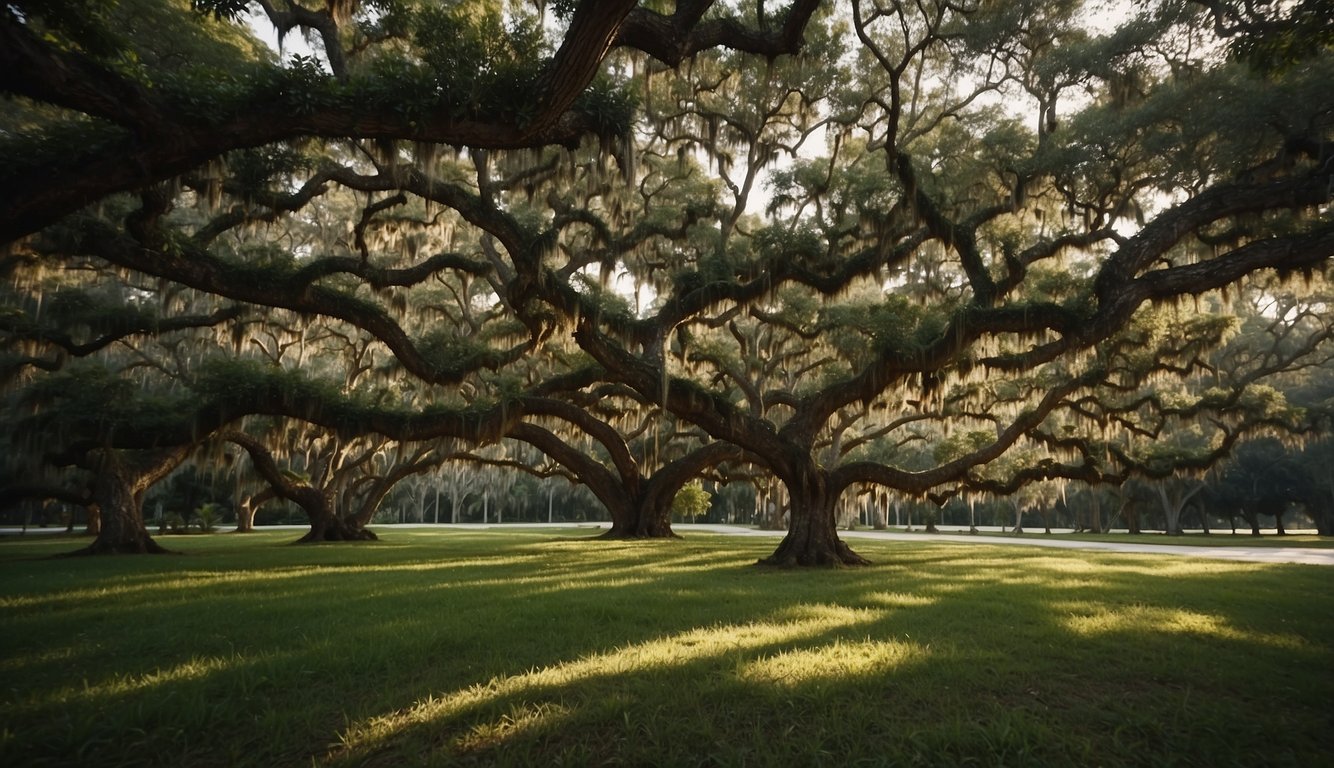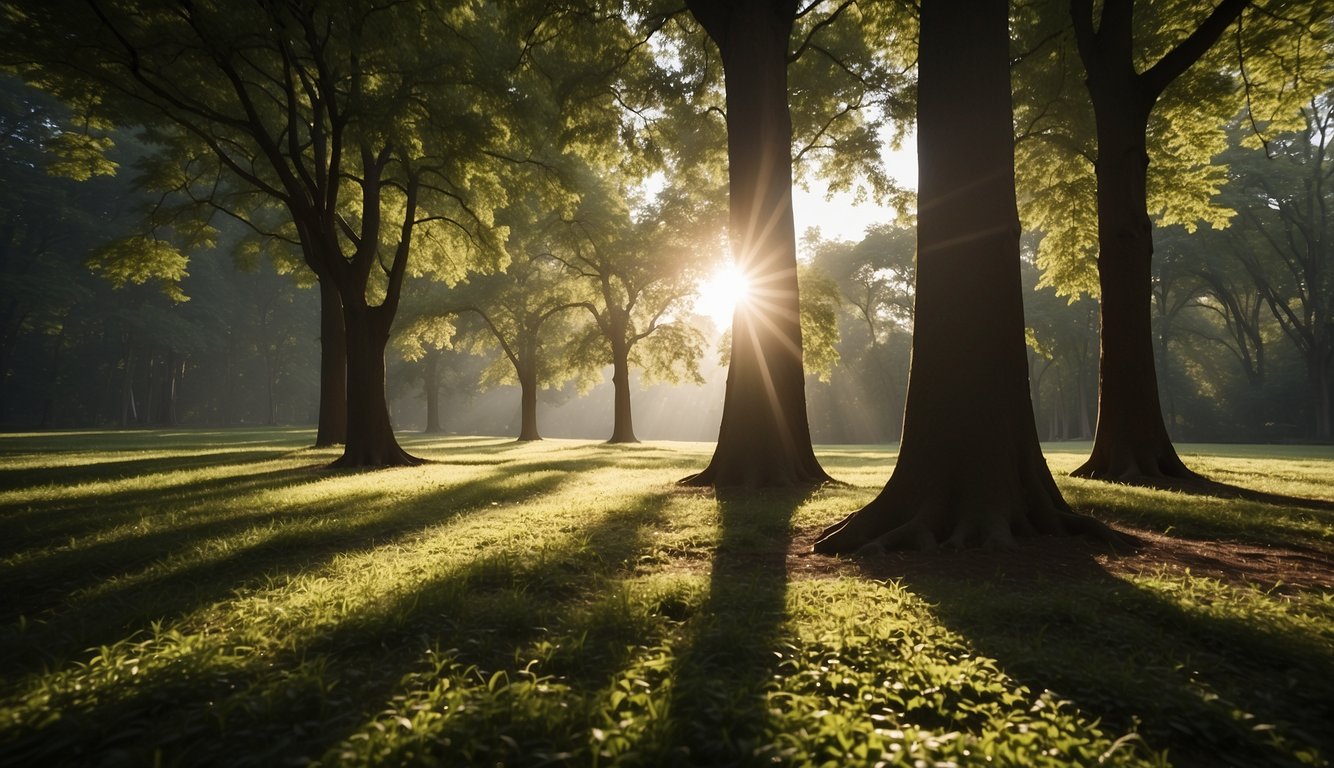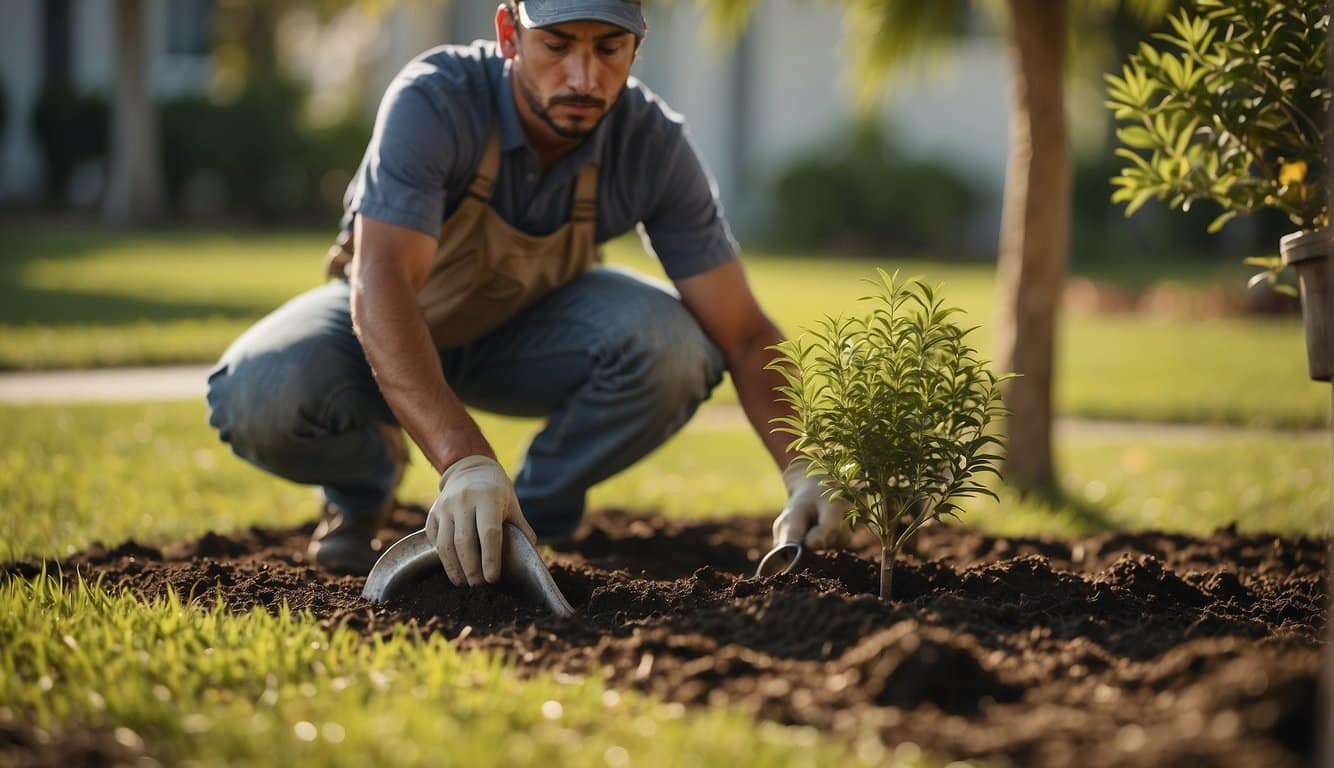In Florida’s warm climate, homeowners and landscapers often look for shade trees that can quickly provide respite from the sun’s intensity.
Fast-growing shade trees are ideal, as they deliver the dual benefits of enhancing aesthetic appeal and offering functional shade in a shorter period.
Florida’s environment is hospitable to a variety of rapid-growing trees which not only grow at an impressive rate but also withstand the local heat and humidity.
Species like the weeping willow, American sycamore, and white poplar are known for their fast growth, rising about five feet annually, making them some of the preferred choices among Floridians.

Yet, selecting the right tree extends beyond growth rate alone.
Climate tolerance and compatibility with hardiness zones are critical factors to consider.
Also significant are trees like the sweetgum, which not only grow quickly but also contribute vibrant autumnal hues to the landscape.
These characteristics assure that the trees are well-suited to Florida’s unique weather conditions and will thrive in various parts of the Sunshine State.
For those with specific needs such as privacy, evergreen varieties like the slash pine, Hong Kong orchid tree, and Carolina cherry laurel remain ever-popular choices due to their dense foliage and robust growth patterns.
Key Takeaways
- Fast-growing trees offer both beauty and practical shade benefits quickly.
- Tree choice should factor in Florida’s climate and hardiness zones.
- Suitable care and planting enhance the growth and health of shade trees.
Fast-Growing Shade Trees in Florida
In the diverse climate of Florida, homeowners and landscapers can choose from an array of rapidly maturing shade trees, each with unique characteristics tailored to the Sunshine State’s conditions.
These trees not only provide relief from the Florida heat but also enhance the aesthetic appeal of landscapes.
- Sweetgum (Liquidambar styraciflua): Recognizable by its star-shaped leaves and spiky fruit, sweetgum is a popular deciduous option that offers vibrant fall colors.
- American sycamore (Platanus occidentalis): Known for its majestic stature and fast growth, adding approximately 5 feet annually, the American sycamore displays distinctive exfoliating bark.
- Weeping willow (Salix babylonica): With its graceful, drooping branches, the weeping willow is not only fast-growing but also provides elegance to any space.
- White poplar (Populus alba): The white poplar is admired for its rapid growth and white foliage underside, which shimmers beautifully in the breeze.
Planting such shade trees involves consideration of space, as they can reach substantial heights and spreads.
Homeowners should ensure adequate room for growth, both above and below ground, to prevent future issues with infrastructure and other plantings.
Furthermore, one must consider the adaptability of each species to their specific region of Florida to guarantee a thriving growth.
Climate Tolerance and Hardiness Zones
When selecting fast-growing shade trees for Florida, one must consider the state’s distinct climate zones and the adaptability of trees to these environments.
Temperature Adaptability
Fast-growing shade trees in Florida must be resilient to the state’s tropical and subtropical climate.
The American sycamore, for instance, is a robust choice for central and northern Florida.
These trees thrive in USDA Hardiness Zones 9-11, which encompass the warmer regions of the state.
Optimal Temperature Range for Shade Trees in Florida:
- American Sycamore: Zones 9-11
- Sweetgum: Zones 5-9, adaptable to North and Central Florida
- Weeping Willow: Zones 6-8, suitable for warmer areas
Soil and Water Requirements
The soil and water needs of fast-growing trees in Florida vary, but most require well-draining soil and consistent moisture, especially during establishment.
The Sweetgum tree, while fast-growing, prefers moist, acidic soil for optimal growth.
Nevertheless, thoughtful consideration of local soil conditions can improve tree health and growth rate.
Soil Preferences for Selected Shade Trees:
- American Sycamore: Prefers deep, rich, moist soil
- Sweetgum: Acidic, moist, well-drained soils are ideal
- Weeping Willow: Adapts to various soil types; prefers wet, well-drained soils
Popular Shade Tree Varieties
When seeking rapid growth and substantial shade, Floridians often turn to specific tree species that are well-suited to the state’s climate and soil conditions. The trees described below have been selected for their growth rate and ability to provide ample shade.
Live Oak
Quercus virginiana, commonly known as the Live Oak, is a quintessential Southern tree that stands out for its longevity and sprawling canopy.
Typically reaching heights of 40 to 80 feet, it creates a broad, dense shade area.
Live Oaks are valued for their adaptability, strength, and the classic look they offer to any landscape.
Southern Magnolia
The Southern Magnolia (Magnolia grandiflora) is renowned for its large, glossy leaves and fragrant, creamy-white flowers.
With typical mature heights ranging from 60 to 80 feet, the Southern Magnolia can serve as an elegant and stately shade tree.
Its evergreen foliage ensures year-round shade and visual interest.
Bald Cypress
A deciduous conifer, the Bald Cypress (Taxodium distichum) thrives in a variety of soils, including wet areas, making it a unique choice for Florida landscapes.
It can grow to impressive sizes, commonly 50 to 70 feet tall, and its feathery, light foliage creates a delicate, dappled shade.
This tree is noted for its distinctive knobby root structures, known as “knees,” that rise above the soil or water level.
Planting and Care Tips
Successful growth of shade trees in Florida hinges on adhering to proper planting techniques and ongoing tree maintenance. This section provides the necessary guidelines to ensure that your trees thrive.
Planting Guidelines
Choosing the Right Location:
- Sunlight: Most fast-growing shade trees require full to partial sun. Space should receive at least 4-6 hours of direct sunlight daily.
- Soil: Plant trees in well-draining soil. Perform a soil test to determine pH level and adjust accordingly for species-specific needs.
Planting Process:
- Digging the Hole: Hole size should be twice as wide and just as deep as the root ball of the tree.
- Placing the Tree: Position the tree so that the top of the root ball is level with the surrounding ground.
- Backfilling: Use a mix of native soil and compost to backfill the hole and water thoroughly to settle the roots.
Watering After Planting:
- Initial Watering: Ensure consistent moisture for the first few months to support establishment.
- Mulching: Apply a 2-3 inch layer of mulch around the base to retain moisture and regulate soil temperature.
Maintenance and Pruning
Regular Watering:
- Adjust watering based on rainfall, soil type, and tree species needs. Young trees often require weekly watering while establishing roots.
Fertilization:
- Initial Fertilization: Avoid fertilizing immediately after planting to prevent root burn.
- Ongoing Care: Fertilize older trees once or twice a year during their growing season, following recommendations for the specific species.
Pruning:
- Formative Pruning: Conduct during dormant seasons to shape the tree and remove any damaged or diseased branches.
- Safety Pruning: Remove any branches that pose a risk to property or individuals.
- Thinning: Thin out dense canopy as needed to allow light and air to penetrate, which helps prevent disease.
Frequently Asked Questions
In selecting the right shade trees for Florida, homeowners often ask about the species’ adaptability, growth speed, and benefits to the ecosystem. The following FAQs address these important considerations to aid in making an informed choice.
What species of shade trees thrive best in Florida’s climate zones?
Trees such as the Drumstick tree, also known as the Moringa or Ben oil tree, excel in Florida’s USDA Growing Zones 9 – 11 due to their preference for sandy loam soil. They offer the added benefit of year-round foliage and growing well in Florida’s climate.
Which shade trees have the shortest maturation time in Florida?
The American sycamore is known for its rapid growth rate, potentially adding around 5 feet to its height annually. This deciduous tree is suitable for growing in central and northern Florida and can provide quick shade due to its speedy maturation.
What native Florida trees are recommended for backyard shade?
Native species like the Southern Live Oak are prized for their extensive canopy and longevity, making them an excellent choice for backyard shade in Florida. These trees are adapted to local conditions and support regional biodiversity.
Are there any fast-growing shade trees suitable for smaller Florida yards?
For smaller yards, the Hong Kong Orchid Tree presents a compact option. It offers swift growth and manageable size without overwhelming limited spaces, while still providing ample shade and aesthetic appeal through its orchid-like flowers.
What are the best flowering shade trees for Florida landscapes?
The Hong Kong Orchid Tree and the Pongam tree are among the top choices for those seeking flowering shade trees.
Their blooms add a stunning visual element to the landscape while their foliage offers the practical benefit of shade.
How do Florida shade trees impact local ecosystems and wildlife?
Shade trees like the Southern Live Oak play a vital role in supporting local ecosystems by providing habitat and food for wildlife.
Native trees, in particular, form a symbiotic relationship with indigenous fauna, enhancing biodiversity and ecological balance.

